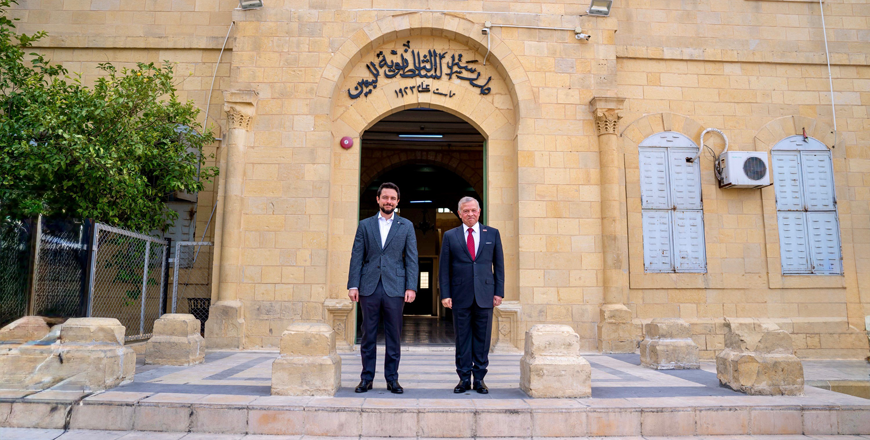
- King visits Salt Secondary School for Boys, describes it as beacon of education since founding of state
- His Majesty says Salt's old streets are testament to city's history, civilisation
- His Majesty inaugurates Military Retirees Club building in Salt
- King bestows Silver Jubilee Medal on individuals, institutions in Balqa
AMMAN — His Majesty King Abdullah said on Tuesday that Balqa represents Jordan's values of tolerance, mutual understanding, and harmony, noting that the governorate is a source of pride for all Jordanians.
During a meeting with a number of local community leaders and figures at the Military Retirees Club building in Balqa, attended HRH Crown Prince Hussein, His Majesty said the history of Balqa and the role of its people in building Jordan are known to all, according to a Royal Court statement.
The King said Salt Secondary School for Boys has been a beacon of education since the founding of the state, and its graduates have served Jordan as patriots and statesmen.
His Majesty noted that Salt's old streets are a testament to the city's history and civilisation, as it has been inscribed on UNESCO’s World Heritage List.
The King concluded by affirming that Jordan remains strong with the determination of its people.
Speaking at the meeting, Balqa Governor Salman Najada expressed best wishes to His Majesty on the Silver Jubilee, highlighting achievements in Balqa over the past 25 years.
Upon arrival at the Military Retirees Club, the King was welcomed by a music performance by local folk bands.
His Majesty also inaugurated the Military Retirees Club building, where the meeting was held, and listened to a briefing by Economic Social Association of Retired Servicemen and Veterans Director General Ismail Al Shobaki, on the clubs, which provide social, sports, and cultural services to military retirees and their families in various governorates.
Accompanied by Crown Prince Hussein, the King visited Salt Secondary School for Boys, and listened to a briefing by the school's principal, Mohammed Kharabsheh, about the school, which was founded in 1923 as the first secondary school in Jordan, the statement said.
His Majesty also visited one of the classrooms and signed the school's guestbook.
During the meeting with Balqa figures, the King bestowed the Silver Jubilee Medal on individuals and institutions in Balqa, in recognition of their contributions to serving Jordan, especially the local community in the governorate.
Prime Minister Jafar Hassan, Royal Hashemite Court Chief Yousef Issawi, Director of the Office of His Majesty Alaa Batayneh, and Adviser to His Majesty for Tribal Affairs Kneiaan Bluwi attended the meeting.